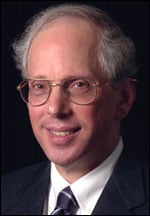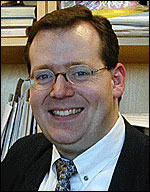About This Webinar
Photonics Media presents two perspectives on communications, one provides an overview of quantum theory of optical communications, and the other discusses confronting the challenge of creating ultrahigh-speed free space communications in the MIR spectrum, with two noted experts in each field.
The Quantum Theory of Optical Communications
 Jeffrey H. Shapiro
Jeffrey H. Shapiro
Massachusetts Institute of Technology
Communication theory for lightwave channels usually employs a semiclassical approach in which electromagnetic waves are taken to be classical fields and the fundamental noise encountered in photodetection is assumed to be shot noise arising from the discreteness of the electron charge. Electromagnetic waves, however, are quantized. Thus photodetection is a quantum measurement whose statistics should be calculated accordingly. Nevertheless, it has long been known that semiclassical and quantum photodetection predict identical measurement statistics in the vast majority of illumination conditions. Recent development of nonclassical light sources — whose photodetection statistics require the use of quantum theory — plus increasing interest in optics-based approaches to quantum information processing, necessitates a thorough understanding of the similarities and distinctions between the semiclassical and quantum theories of optical communication. This talk will present a brief primer on that topic. No prior knowledge of quantum optics will be required.
Professor Jeffrey H. Shapiro is the Julius A. Stratton Professor of Electrical Engineering. Professor Shapiro’s research interests center on the application of communication theory to optical systems. He is best known for his work on the generation, detection, and application of squeezed-state light beams, but he has also published extensively in the areas of atmospheric optical communication, coherent laser radar, and quantum information science. Professor Shapiro is a Fellow of the American Physical Society, the Institute of Electrical and Electronics Engineers, the Institute of Physics, and the Optical Society of America. In 2008, he was co-recipient of the Quantum Electronics Award from the IEEE Lasers and Electro-Optics Society (now the IEEE Photonics Society), and the recipient of the Quantum Communication Award for Theoretical Research from Tamagawa University.
Additional question for Dr. Shapiro from the Webinar:
Q: How far are we from having a quantum computer?
I would say that we are quite far from having one capable of solving an important problem that is beyond the reach of conventional (classical) computers. How many years it will take before we have a truly powerful quantum computer I cannot say. In my view we are one -- or perhaps a few -- research breakthroughs from being able to build a such a computer
To Learn More about Dr. Shapiro's research:
Lecture notes for 6.453, Quantum Optical Communication…
- available from MIT Open Courseware here
- no prior knowledge of quantum mechanics required
A tutorial article…
- J.H. Shapiro, “The quantum theory of optical communications,” IEEE J. Sel. Top. Quantum Electron. 15, 1547-1569 (2009); corrections, IEEE J. Sel. Top. Quantum Electron. 16, 698 (2010)
- 6.453 provides sufficient prerequisite material
Using entanglement to defeat eavesdropping…
- J.H. Shapiro, “Defeating passive eavesdropping with quantum illumination,” Phys. Rev. A 80, 022320 (2009)
- 6.453 provides sufficient prerequisite material
The Challenge of Creating Ultrahigh-Speed FREE Space Communications in the MIR Spectrum

Dr. Rainer Martini
Director of the Ultrafast Laser Spectroscopy and Communication Laboratory
Stevens Institute of Technology
Dr. Martini will speak on his work confronting the challenge of creating ultrahigh-speed free space communications in the MIR spectrum. His team is working to revolutionize communications by modulating frequency and amplitude in laser light.
Martini has been with the Stevens Institute of Technology (SIT) since 1999. He is currently associate professor for physics, director of the Ultrafast Laser and High-Speed Communication Laboratory, and, since Sept. 2011, is director of the Department of Physics and Engineering Physics. He is a member of the German Physical Society, American Physical Society, Optical Society of America, IEEE and SPIE. Martini is the author or co-author of numerous papers and holds three US patents.